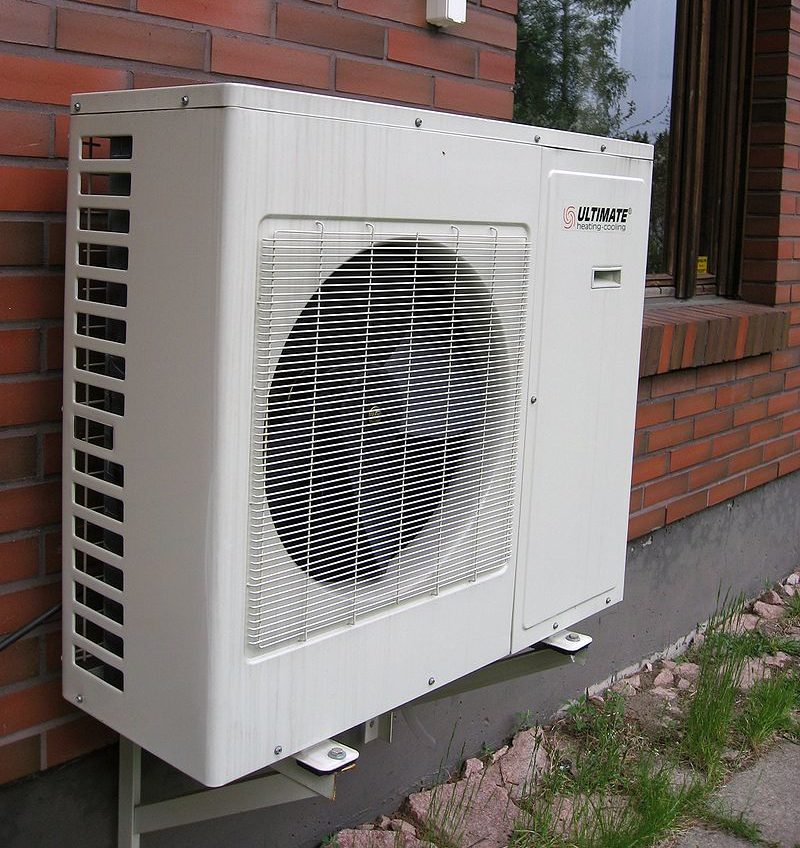A Swedish-Austrian research group claims to have demonstrated that the combined use of heat pumps (HPs) and rooftop PV generation may be expanded in their countries and in Europe by replacing current subsidies with a carbon tax policy.
According to them, switching from subsidization to taxation may be a feasible and simpler solution than the numerous incentive schemes that are currently being implemented across Austria. “The Austrian subsidization scheme for HP and PV systems are different for every state, creating confusion and inconstancy for potential adopters,” they warned in the paper Techno-economic analysis of combined heat pump and solar PV system for multi-family houses: An Austrian case study, published in Energy Strategy Reviews.
Through their analysis, which evaluated the lifecycle cost-effectiveness of the two technologies, the researchers sought to identify the most critical techno-economic parameters for profitability, which was determined by considering net present value (NPV); the benefit-cost ratio (BCR) which is given by the capital costs, subsidies and natural gas prices; and the internal rate of return (IRR). The assessment considered both air-to-water heat pumps (AWHP) and ground source heat pumps (GSHP) used for domestic hot water (DHW) and space heating (SH).
Their model also considered annual gas consumption, electricity supplied from the grid, and electricity fed into the grid by a south-oriented PV system mounted on a flat roof at a tilt angle of 42 degrees and occupying around 40% of the roof's available surface. “These inputs are estimations of the annual costs, savings and earnings, which are dependent on the O&M costs of the heat pump and PV systems; saved O&M of the gas heating system; and the gas price, electricity price and feed-in tariff,” the academics specified. “Together with the initial investment costs of the heat pumps and PV panels, the saved new gas boiler costs and the previously described energy results, the economic feasibility of replacing the conventional gas system with a combined heat pump and PV system has been estimated by calculating the net NPV, IRR and BCR.”
The techno-economic assessment showed, according to the scientists, that a drop in upfront costs for both heat pumps and PV may increase the BCR of this combination and, most important, that its profitability is strictly dependent on gas prices. “The parametric analysis shows that BCR is most sensitive to gas prices, where a modest 17% increase makes the combined heat pump and PV systems considerably more attractive, even without any subsidy,” the authors of the paper affirmed. “This increase in the gas price could be caused by market forces, introducing carbon taxes, or environmental or geopolitical reasons.”
They also noted that if this gas price increase would be combined with a decrease in electricity prices, the uptake of heat pumps coupled with solar may reach unexpected proportions. “A change in PV feed-in tariffs has not significantly influenced the profitability for the examined case,” they concluded.
The research group was formed by scientists from the KTH Royal Institute of Technology at Sweden's Department of Energy Technology, and the Austrian Institute of Technology (AIT).
This content is protected by copyright and may not be reused. If you want to cooperate with us and would like to reuse some of our content, please contact: editors@pv-magazine.com.




1 comment
By submitting this form you agree to pv magazine using your data for the purposes of publishing your comment.
Your personal data will only be disclosed or otherwise transmitted to third parties for the purposes of spam filtering or if this is necessary for technical maintenance of the website. Any other transfer to third parties will not take place unless this is justified on the basis of applicable data protection regulations or if pv magazine is legally obliged to do so.
You may revoke this consent at any time with effect for the future, in which case your personal data will be deleted immediately. Otherwise, your data will be deleted if pv magazine has processed your request or the purpose of data storage is fulfilled.
Further information on data privacy can be found in our Data Protection Policy.